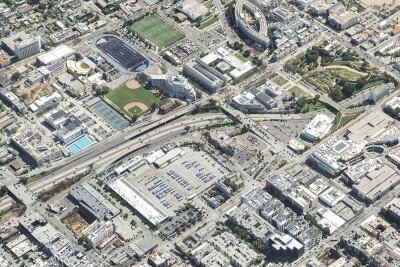Velodyne Lidar’s HDL-64 lidar was powerful enough (and early enough to the automotive lidar game) to earn a place on top of many high-profile autonomous vehicle projects. Now, Velodyne is upgrading it with the release of the VLS-128.
Though the company’s official language focuses on the automotive applications of the sensor, the VLS-128 could be good news for Velodyne’s mobile-mapping customers as well.

A Velodyne lidar scan of Alameda, CA.
This latest lidar sensor, which was available for preview at the IAA Auto Show in Frankfurt, Germany in September, features 128 scanning channels and four times the data density of its predecessor. Velodyne says this will enable cars to gather denser, more complete data to make safety determinations, even while traveling at highway speeds.
Despite promising to gather billions more points than the HDL-64, the new sensor is 70% smaller.*
President Marta Hall says that the price will also drop as compared to earlier units, though did not offer specific figures. “We are getting the cost down,” Hall said. “It is already dramatically reduced, and more so when ordered at higher volumes.”
The release of this sensor comes as no surprise, since the past 12 months have seen Velodyne focus on a strong play to dominate the automotive lidar market. In December 2016, the company announced a proprietary and scalable solid-state lidar system that enabled them to produce low-cost sensors at scale to meet the needs of automotive companies. In January, the company made good on the promise of scale when it announced a new megafactory that will produce over a million units per year. By April, the company was announcing Velarray, a solid-state sensor small enough to embed in various parts of a car for full lidar coverage.
For more information, see Velodyne.com
- Correction, 11/10/17: The article erroneously stated that the new sensor is smaller due to its use of Velodyne’s solid-state lidar technology.








